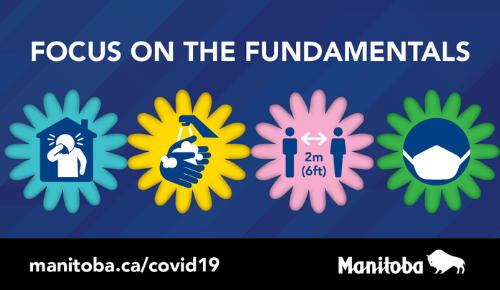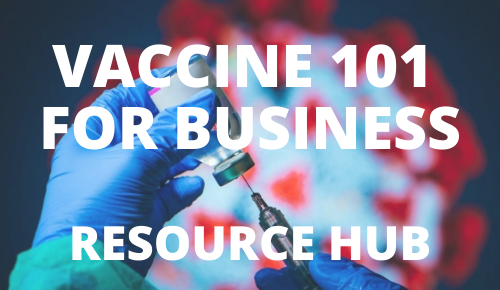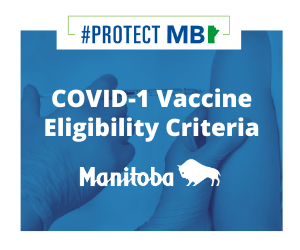
COVID-19 Economic
Response Plan For Business
OPEN - CANADA-MANITOBA JOB GRANT (Intake 1)
For information and to apply: https://www.gov.mb.ca/jec/busdev/financial/cmjg/index.html
The Manitoba government has opened intake for the Canada–Manitoba Job Grant. Eligible training for the first intake will include training that takes place between April 1, 2022 and March 15, 2023.
The Canada-Manitoba Job Grant helps employers offset the costs of training new employees, or costs associated with developing the skills of their existing workers to meet the requirements of their present job, or to attain a promotion.
Eligible employers may apply for up to $10,000 per employee to assist with training costs delivered by a third party. Employers with 100 or fewer employees must contribute a minimum of 25 per cent of training costs, and employers with over 100 employees must contribute a minimum of 50 per cent of training costs. Employers can apply for up to a maximum of $100,000 in funding.
Employers must have a job available for the trainee upon successful completion of the training. For existing employees, the purpose of training should be to upgrade their skills so they may move up to a better job, or meet employer needs in the workplace.
Employers decide who obtains training, what training is required, and which approved third-party trainer will deliver training. The Manitoba government can help employers to determine their workforce and training needs and connect them to job seekers.
Who is eligible to apply for a Job Grant?
- Private employers
- Non-profit organizations
- Industry associations, sector councils, groups of employers
- Union halls
- First Nations
- Municipal governments
Who is not eligible to apply for a grant?
- K-12 schools and post-secondary institutions funded by provincial/federal sources
- Federal, provincial and territorial governments
- Federal and provincial crown corporations and agencies
Who is an eligible training participant?
- Must be a Canadian citizen or permanent resident of Canada
- Full-time, part-time, and seasonal employees
- Unemployed and seeking training to get a job
- Employees who reside in another province, but are working in Manitoba
How much funding can I apply for?
- Small companies with 100 or fewer employees can apply for up to 75% of eligible training costs
- Companies with 101 or more employees can apply for up to 50% of eligible training costs
- Employers can apply for up to a maximum amount of $10,000 per training participant
- Maximum Job Grant amount regardless of number of trainees and cost of training is $100,000
What costs are eligible for funding?
- tuition fees or fees charged by a training provider
- mandatory student fees
- textbooks, software and other required materials
- examination fees
- travel costs for individuals residing in northern and remote communities to attend training events in Manitoba delivered outside their communities or unavailable online
Who can deliver the training?
Training can be delivered at the workplace, online or in a classroom or training facility and must be provided by a third-party trainer. This could include:
- post-secondary institutions
- private vocational institutions
- sector councils or industry associations
- union halls
- equipment manufacturers and other private trainers that have the applicable curriculum, knowledge/ qualifications, and equipment or materials required for training
How is the Job Grant paid to an employer?
The employer is responsible for selecting and paying the trainer. To be reimbursed for the eligible training costs, the employer must submit:
- Training Plan Report
- Training Evaluation
- Proof of payment of eligible training costs (e.g., invoice and cancelled cheque; invoice and PayPal receipt, etc.)
How are grant applications assessed?
All grant applications that meet eligibility requirements will be processed in the order that they are received until the Job Grant has been fully expended.
How can we help?
The Province of Manitoba can assist employers with:
- identifying their training needs
- connecting with suitable job seekers
- completing the grant application
- information about training delivered by third-party service providers
- information about other available workforce development programs and services
Links:
Canada-Manitoba Job Grant Application
Canada-Manitoba Job Grant – Employer Fact Sheet
Canada-Manitoba Job Grant – Frequently Asked Questions
Still have questions or need more information?
Manitoba Government Inquiry Tel: 204-945-3744
Toll Free in North America: 1-866-626-4862
Email: mgi@gov.mb.ca www.gov.mb.ca/wd/ites/is/cjg.html
The information on this website is based on rapidly developing relief programs and legislative changes, and is produced by Manitoba Business Matters as an information service to Manitoba businesses. It is not intended to substitute professional advice.
These summaries will be updated as support programs and legislation evolve.
For the most comprehensive and current information, please review the Province of Manitoba’s COVID-19 supports for business by clicking here.
OPEN - TOURISM RELIEF FUND (TRF)
The Tourism Relief Fund (TRF), administered by Canada’s regional development agencies and Innovation Science and Economic Development Canada (ISED), supports tourism businesses and organizations adapt their operations to meet public health requirements while investing in products and services to facilitate their future growth.
With a budget of $500 million over two years (ending March 31, 2023), including $50 million specifically dedicated to Indigenous tourism initiatives, and $15 million for national initiatives, this fund will position Canada to be a destination of choice when domestic and international travel is once again safe by:
- empowering tourism operators to create new or enhance existing tourism experiences and products to attract more local and domestic visitors
- helping the sector reposition itself to welcome international visitors by offering the best Canadian tourism experiences we have to offer the world
Indigenous tourism projects are important to Canada’s economic recovery efforts and a priority under the TRF. Under the Fund, $50 million will specifically support Indigenous tourism initiatives.
Eligible recipients
Applicants must fall under one of the following categories to be eligible for funding:
1) A key supplier/operator in the visitor experience
A key supplier/operator in the visitor experience is one that provides the infrastructure and services necessary to support a tourism economy, connects tourism product to potential markets, leads planning for sustainable destination development and supports capacity building/skill development in the sector, etc.
2) Part of a defined tourism cluster
A tourism cluster is a geographic concentration of businesses and organizations involved in tourism, linked by common and complementary products and services that are tailored for the visitor economy and supported by a network of services and associated institutions. A tourism cluster can include- but is not limited to- a community or region that is dependent on tourism for economic activity or is transitioning towards a more tourism-focused local economy.
3) An anchor product in a destination
An anchor product in a destination is defined as a key asset that serves as a motivator of travel to the region. It is the activity or product that provides the catalyst for the visitor to visit the destination. Anchor products may be operated by for-profit or not-for-profit organizations.
Note: You may fit under more than one of these categories and will have the opportunity to explain how under the project activities area.
Eligible applicants need to be part of the tourism ecosystem and will include tourism entities that cater mainly to visitors (not including local residents). The following eligible applicants include:
- incorporated businesses, primarily small-and medium-sized enterprises (SMEs)
- not-for-profit incorporated organizations (including tourism associations and destination marketing organizations)
- municipalities, municipal organizations, Crown corporations and related parties
- Indigenous/First Nation/Métis Settlement owned business or an indigenous organization such as Indigenous-led not-for-profits and organizations which include but are not limited to First Nations as represented by their Chief and Council, Tribal Councils, Indigenous Representative Organizations, Métis and Inuit organizations and Settlements as well as Indigenous/First Nation/Métis Settlement owned organizations
Ineligible recipients
Businesses that are in the following industries are normally not eligible under this initiative:
- restaurants
- retail sector
- hotel chains
Note: In exceptional cases, restaurants and Canadian-owned hotels may be considered for funding if they are an anchor product and the main reason for attracting tourists to the region. These will be assessed on a case-by-case basis.
Additional information
- project costs must be incurred by March 31, 2023
- located in Western Canada
- submit a fully complete application
Eligible activities
Eligible projects will fall under one of two themes:
Product development/Development and enhancement of tourism experiences to help tourism businesses adapt to the ‘new normal’, to modernize tourism offerings and to help the sector adopt more environmentally sustainable practices. Some examples of project activities may include, but are not limited to the following:
- creating, adapting, and enhancing protocols and permanent infrastructure to meet health and safety requirements to accommodate visitors and employees to keep businesses operating
- helping operators traditionally reliant on international markets, such as those in downtown cores, to create innovative tourism offerings attractive to local and domestic visitors
- modernizing operations, attractions, greening initiatives, and online sales services
- supporting businesses with local promotion of tourism products, including digital and virtual reality experiences
- developing capacity for more inclusive tourism experiences (e.g. staff training to ensure welcoming, inclusive environments to diverse clientele, gender-neutral washroom facilities, etc.)
Destination development to support projects that would position communities to take advantage of post-pandemic opportunities through strategic planning for medium to long-term investments, as well as supporting destination development, in-line with objectives set out in the Federal Tourism Growth Strategy. Some examples of project activities may include, but are not limited to the following:
- providing support to local communities to develop sustainable tourism plans based on research and market analysis, and designed to rebuild tourism confidence in communities
- supporting seasonal dispersion by equipping tourism SMEs to extend their product offering to increase visitation during the winter and shoulder seasons
- supporting destinations to implement tourism plans that create or improve local assets, facilities, and planning for key infrastructure
- supporting the development and implementation of tourism economic development recovery plans that consider possible key market reactions when travel can safely resume
- enhancing tourism services and experiences, including market readiness designed to help communities and SMEs develop experiential tourism, that will respond to visitor expectations post COVID-19
- assisting industry partners to support recovery and rebuilding efforts through coordination, and developing new offerings and/or capacity building on behalf of the sector
- implementing strategies to re-activate and animate downtown cores, main streets and business districts through activities, public art, and mixed use spaces
- supporting scale-up and market expansion activities for key enterprises essential to economic vitality and the local business climate
Priorities
Priority consideration will be given to projects that:
- support the Indigenous tourism sector
- the business/organization is of strategic importance to the tourism sector in the region
- contribute to the economic development of a region
- contribute to job creation in the region
- take place in a tourism dependent community/region, including projects supporting downtown cores
Funding available
For all projects:
- recipients would not normally receive funding for more than one project
- project contribution amounts will not normally exceed $500,000
- the actual contribution amount will be based on the minimum amount required to carry out the project
For for-profit businesses:
Contributions to businesses will be either:
- non-repayable contributions up to 50% of eligible costs to a maximum of $100,000 or
- repayable contributions up to 75% of eligible costs to a maximum of $500,000
A business cannot receive a combination of a non-repayable and a repayable contribution for the same project.
Businesses must indicate their request for either a non-repayable or a fully repayable contribution when describing the project in the project description area of the application form and the project cost area when indicating how much support will be requested.
Contributions to non-profit organizations/Indigenous entities (not generating profits) will normally be non-repayable.
Note: Project contribution amounts will not exceed $500,000
Submitting an application
Before submitting an application, please make sure to consult the applicant guide.
Once you are ready, please complete and submit the Tourism Relief Fund application form.
The information on this website is based on rapidly-developing relief programs and legislative changes and is produced by Manitoba Business Matters as an information service to Manitoba businesses. It is not intended to substitute professional advice.
These summaries will be updated as support programs and legislation evolve.
For the most comprehensive and current information, please review the Government of Canada’s COVID-19 Economic Response Plan click here.
OPEN - CANADA DIGITAL ADOPTION PROGRAM
In Budget 2021, the government announced that, to fuel economic recovery, jobs, and growth, ISED will be launching the Canada Digital Adoption Program (CDAP), with a $1.4 billion investment over four years, starting in 2021-22. This investment will allow ISED to:
- Work with organizations across Canada to provide access to skills, training, and advisory services for all businesses accessing this program;
- Provide micro-grants to smaller, “Main Street” businesses to support costs associated with technology adoption; and,
- Create training and work opportunities for as many as 28,000 young people to help small and medium-sized businesses across Canada adopt new technology.
This program provides businesses with two streams of support:
- Stream 1 – Grow Your Business Online: The first stream is designed to help small businesses digitize and take advantage of e-commerce opportunities. Eligible businesses receive micro-grants of $2400 to help with the costs related to adopting digital technologies as well as support and advice from a network of youth digital advisors.
- Stream 2 – Boost Your Business Tech: Some businesses require more comprehensive support to adopt new technology, and a second stream is in place for businesses, such as small manufacturing and food processing operations. Support for these businesses emphasizes advisory expertise for technology planning and financing options needed to put these technologies to use.
The Government of Canada also issued a Call for Applications for Grow Your Business Online funding to provide funds to interested applicants whose role will be to support small businesses in developing and implementing their e-commerce strategies. The organization must provide the following essential requirements:
- Navigation and entry-level advisory services: Promotion, marketing to recruit businesses, intake of businesses, provision of navigation and advisory services on e-commerce platform options;
- Youth advisory services: Hiring, training, and mentoring students for deployment into small businesses, where they will act as youth digital advisors to help the small business owners build their e-commerce capabilities; and,
- Micro-grants: Providing micro-grants to eligible small businesses to support the costs associated with the adoption of digital technologies related to e-commerce capabilities.
The information on this website is based on rapidly-developing relief programs and legislative changes and is produced by Manitoba Business Matters as an information service to Manitoba businesses. It is not intended to substitute professional advice.
These summaries will be updated as support programs and legislation evolves.
For the most comprehensive and current information, please review the Government of Canada’s COVID-19 Economic Response Plan click here.
OPEN - JOBS & GROWTH FUND (JGF)
The Jobs and Growth Fund (JGF) is a $700-million federal program to support regional job creation and position local economies for long-term growth. This includes up to $70 million dedicated to businesses created after January 2020 that meet the eligibility criteria.
In the West, PrairiesCan and PacifiCan are investing $217 million to help job creators and the organizations that support them to future-proof their businesses, build resiliency and prepare for growth by transitioning to a green economy, fostering an inclusive recovery, enhancing competitiveness and creating jobs in every corner of the country.
Eligible Applicants
- businesses, including co-operatives
- not-for-profit organizations and community economic development partners
- indigenous organizations such as not for profits, and businesses, which include but are not limited to First Nations as represented by their Chief and Council, Tribal Councils, Indigenous Representative Organizations, Métis and Inuit organizations and Settlements as well as Indigenous/First Nation/Métis Settlement owned organizations
Assistance Available
- Eligible businesses could receive interest-free repayable contributions for up to 50% of eligible costs.
- Eligible not-for profit organizations could receive non-repayable contributions for up to 90%of eligible costs.
- Indigenous-led organizations and/or businesses are strongly encouraged to apply. Under the initiative, RDAs may contribute up to 100% of eligible project costs for projects with Indigenous clients.
Eligible Activities
Activities that support the transition to a green economy, including those that:
- support the development and adoption of clean technology
- help communities and businesses plan and drive clean, sustainable economic growth
- partner with organizations to catalyze the development of green regional clusters
- work with organizations supporting businesses to transition to a green economy
Activities that foster an inclusive recovery, including those that:
- support businesses owned or majority-led by underrepresented groups, such as Indigenous peoples, members of racialized communities, women, youth, LGBTQ2, persons with disabilities, newcomers to Canada, and members of official language minority communities
- increase the participation of underrepresented groups in the economy by supporting not-for-profit organizations that provide funding, business services, training and access to resources to build a more inclusive and equitable workforce
Activities that preserve Canada’s competitiveness and future-proof SMEs through digital adoption, including those that:
- support the development or adoption of digital and technological solutions (i.e., Industry 4.0 solutions) to increase and promote business productivity
- invest in technologies that help scale businesses, enhance their capabilities and increase resilience
Activities that strengthen capacity in sectors critical to Canada’s recovery and growth, including those that:
- support scale-up and market expansion activities that bolster traditional areas of strength
- develop emerging areas of global competitive advantage
- support supply chain adaptation and diversification opportunities to build Canadian capacity in critical sectors such as food production, medical supplies and biomanufacturing
Project Examples
- Projects related to clean technology and product development to de-risk and mobilize private capital investments in areas of emerging strength.
- Process adoption that support gains in productivity, greening production and operations as well as climate change adaptation projects that increase SME resilience to the impacts of climate change.
- Investing in the clean and circular economy in partnership with regional governments.
- Inclusive growth projects that support underrepresented entrepreneurs, owned/led businesses and workers which could include projects such as: providing funding to underrepresented entrepreneurs or owned/led SMEs to scale up and reach new markets; or funding to NFPOs providing inclusive business services to improve access to capital, mentoring opportunities and networks to drive greater economic representations.
- Projects contributing to diversifying local capacity (e.g. natural resource endowment, manufacturing assets and the bi-products of traditional industry, etc.) into areas with future clean growth potential.
- Projects that support collaborations to catalyze the development of consortia to support green economy transition, tech development and adoption.
- Projects that support the development or adoption of digital and technological solutions, and investments in technologies that help scale businesses, enhance their productive capabilities, and increase resilience (e.g., cybersecurity solutions, Industry 4.0).
- Projects supporting scale up and market expansion activities that bolster traditional areas of strength and highly impacted sectors.
- Projects that facilitate the development of emerging areas of global competitive advantage that offer opportunities for future growth.
- Projects that attract investment in key sectors.
- Projects that support supply chain adaptation and diversification opportunities to protect Canadian capacity in critical sectors such as food production, medical supplies, and biomanufacturing.
- Other types of projects that support SMEs and communities that are critical to the economic fabric of communities (i.e., major employers in those communities).
Applications are being accepted on a continuous intake basis until March 31, 2024, or until funding is fully committed.
How To Apply
Before submitting an application, please make sure to consult the applicant guide.
Once you are ready, please complete and submit the Jobs and Growth Fund application form.
Questions? Contact your local PrairiesCan office.
The information on this website is based on rapidly-developing relief programs and legislative changes and is produced by Manitoba Business Matters as an information service to Manitoba businesses. It is not intended to substitute professional advice.
These summaries will be updated as support programs and legislation evolve.
For the most comprehensive and current information, please review the Government of Canada’s COVID-19 Economic Response Plan click here.
OPEN - LARGE EMPLOYER EMERGENCY FINANCING FACILITY (LEEFF)
LEEFF is a program instituted by the Government of Canada to provide short-term liquidity assistance in the form of interest-bearing term loans to large Canadian employers who have been affected by the COVID-19 outbreak.
The purpose of this program is to provide liquidity to large employers with a “significant footprint” in Canada that need it as a result of the economic downturn caused by COVID-19 until they can access more traditional market financing.
Note: LEEFF is not meant to provide low-cost lending to firms, nor to rescue companies that were already facing insolvency prior to the pandemic.
Companies that apply for LEEFF will be required to:
- Respect Collective Bargaining Agreements, including pensions,
- Follow strict limits on:
- Executive pay,
- Share buybacks, and
- Dividends, and
- Commit to publishing future climate disclosure reports consistent with the Financial Stability Board’s Task Force on Climate-related Financial Disclosures, as well as provide details of how future operations will support environmental sustainability goals and national climate goals.
LEEFF will be open to large Canadian employers who (a) have a significant impact on Canada’s economy, as demonstrated by (i) having significant operations in Canada or (ii) supporting a significant workforce in Canada; (b) can generally demonstrate approximately $300 million or more in annual revenues; and (c) require a minimum loan size of $60 million based on the applicant’s cash flow needs for the next 12 months. The loan size for each applicant will be assessed on a case by case basis based on demonstrated need.
Large for-profit enterprises in all sectors, except for those in the financial sector, can apply for funding under LEEFF. Certain not-for-profit enterprises, such as airports, could also be eligible. Companies that have been found guilty of tax evasion are not eligible under the program.
HOW TO APPLY: Companies seeking support must commit to minimizing the loss of employment and sustaining their domestic business activities, and must demonstrate that funding under LEEFF forms part of their overall plan to return to financial stability. Broader sectoral dynamics for LEEFF applicants will be considered through processes led by Innovation, Science and Economic Development Canada. Smaller firms are eligible for other Government of Canada COVID-19 Economic Response programs, such as the Business Credit Availability Program or other credit support programs offered by the Business Development Bank of Canada or Export Development Canada.
Applicants should register their interest at applications@ceefc-cfuec.ca with a completed inquiry form. A CEEFC representative will promptly send applicants a non-disclosure agreement, application form and instructions. The application form will request important information relating to the applicant and its financial condition.
Applicants will be contacted by both representatives of CEEFC and ISED Canada to begin the process.
PROGRAM DURATION: The Large Employer Emergency Financing Facility program will be open while the current economic situation persists. For more information on the Large Employer Emergency Financing Facility program, click here.
For more information on the Large Employer Emergency Financing Facility program, click here.
To view the LEEFF fact sheet, please click here.
For answers to Frequently Asked Questions, please click here.
The information on this website is based on rapidly-developing relief programs and legislative changes and is produced by Manitoba Business Matters as an information service to Manitoba businesses. It is not intended to substitute professional advice.
These summaries will be updated as support programs and legislation evolve.
For the most comprehensive and current information, please review the Government of Canada’s COVID-19 Economic Response Plan click here.
OPEN - BLACK ENTREPRENEURSHIP PROGRAM
The Black Entrepreneurship Loan Fund, a component of the Black Entrepreneurship Program (BEP), is a partnership between the Government of Canada, Black-led business organizations and financial institutions. It will provide loans up to $250,000 to Black business owners and entrepreneurs across the country.
The Government of Canada has announced that the Loan Fund is accepting loan applications from Black business owners and entrepreneurs through the Federation of African Canadian Economics (FACE).
The Federation of African Canadian Economics (FACE) is the legal entity designated to administer the government contribution to the loan fund. It is a federally incorporated not-for-profit created by a group of Black business support organizations (BBSO) from across Canada.
The Business Development Bank of Canada (BDC) has committed $130 million to extend capital to Black entrepreneurs under the loan fund, and has the expertise, knowledge and capacity to work with FACE in administering the loan fund.
Who is eligible under the Black Entrepreneurship Loan Fund?
To be eligible for a loan, an applicant must:
- self-identify as Black or Black-led (majority ownership of >51% by Black Canadians);
- be a legal resident of Canada: i.e. Canadian citizen or permanent resident, or conventional refugee (for microloans only), or a legal entity owned and controlled by a Canadian citizen or citizens; and
- be a minimum of 18 years.
What businesses are eligible under the loan fund?
Eligible businesses may include start-ups and existing for-profit small businesses in Canada. Such businesses can be corporations or sole proprietors and for-profit social enterprises. Businesses must have a business plan, business registration and recent financial statements or financial projections for start-ups.
Any Black business owners and entrepreneurs with questions are encouraged to reach out to FACE for further details.
What businesses are not eligible under the loan fund?
Not-for-profit organizations are not eligible for loans.
What is eligible for financing under the loan fund?
Loans can be used for:
- Capital investments–equipment, leasehold improvements, property improvement, office equipment
- Working capital–inventory, payroll, lease payments, accounts management, rent, overhead costs
- Short-term receivable financing (i.e. financing to service a contact)
What is not eligible for financing under the loan fund?
Loans cannot be used to finance items such as goodwill, restructuring conventional business-related debts, dividend payout, shareholder loan repayment or issuance, bonuses, stock buybacks, option issuance, or an increase to shareholder or management committee compensation.
This list is not exhaustive. When in doubt, speak with your account manager.
Loan criteria:
The loan fund will offer loans up to $250,000. FACE can provide loans of up to $100,000. Loans above this amount will be risk shared with the Business Development Bank of Canada.
Who will process the loan applications?
The processing of loans is shared between FACE and the Business Development Bank of Canada. FACE is the initial entry point for all Black-owned enterprises interested in applying for a loan. Loan applications will be reviewed by FACE, and the underwriting (fulfillment) process will be shared by the Business Development Bank of Canada.
How to apply:
The FACE loan portal, accessible at Federation of African Canadian Economics (FACE), will act as the electronic and initial intake process for interested applicants. Loan applicants will be able to submit and communicate with a FACE client relationship manager on the progress of their loan request.
FACE is committed to turning around applications in a timely manner. Time for turnaround will depend on the type of applications received and the due diligence that is required by the loan administrator and the Business Development Bank of Canada. As a result, the timelines will vary based on individual circumstances.
To apply for the Black Entrepreneurship Loan Fund, please click here.
For answers to Frequently Asked Questions, please click here.
The information on this website is based on rapidly developing relief programs and legislative changes, and is produced by Manitoba Business Matters as an information service to Manitoba businesses. It is not intended to substitute professional advice.
These summaries will be updated as support programs and legislation evolve.
For the most comprehensive and current information, please review the Government of Canada’s COVID-19 Economic Response Plan.
UPDATED - CANADA RECOVERY HIRING PROGRAM (CRHP)
NOTE: Although this programs ended on May 7, 2022, businesses can apply for support up to 180 days after the end of the claim period for which they are applying.
The Canada Recovery Hiring Program (CRHP) is a hiring subsidy which supports employers with a subsidy of up to 50% on incremental remuneration paid to eligible working employees (i.e. the portion of remuneration exceeding the remuneration of the baseline period).
CRHP will be offered from June 6, 2021 to May 7, 2022, to qualifying employers who have seen a drop in revenue due to COVID-19. During the periods where applicants are eligible for the CEWS, they will have the choice of benefiting from either the CRHP or the CEWS with a declining rate.
The claim period numbering relates to when a program started.
- Canada Emergency Wage Subsidy (CEWS) was one of the first wage subsidies and CEWS starts with claim period 1 (March 15, 2020).
- Because Canada Recovery Hiring Program (CRHP) started at the same time as CEWS claim period 17 (June 6, 2021), the first period you can claim CRHP is 17.
- Because the Tourism and Hospitality Recovery Program (THRP) and the Hardest-Hit Businesses Recovery Program (HHBRP) started at the same time as CRHP claim period 22 (October 24, 2021), the first period you can claim THRP or HHBRP is 22.
Who can apply?
An eligible employer will be permitted to claim either the CRHP or the CEWS for a particular qualifying period, but not both.
Employers eligible for the CEWS will generally be eligible for the hiring subsidy. However, a for-profit corporation will be eligible for the hiring subsidy only if it is a CCPC (Canadian-controlled private corporation.)
Other eligible employers would include individuals, non‑profit organizations, registered charities and certain partnerships. Eligible employers (or their payroll service provider) would be required to have had a payroll account open with the Canada Revenue Agency on March 15, 2020.
How does the subsidy work?
The amount you get from the subsidy will be equal to that claim period’s subsidy rate multiplied by your incremental costs.
Incremental costs refer to the difference between your baseline payroll and your payroll in a given claim period.
Baseline payroll for every CRHP claim period is equal to your payroll amount from March 14 to April 10, 2021.
Eligible payroll includes salary, wages, and other remuneration for which employers are required to withhold income taxes – and is limited to $1129/week per employee in both the baseline and qualifying period.
Note: The hiring subsidy is not available for furloughed employees.
Claim and Reference Periods
To qualify for a hiring subsidy, an eligible employer would have to have experienced a decline in revenues sufficient to qualify for the Canada Emergency Wage Subsidy in that qualifying period. Since recent changes to the CEWS mean it will not be available from July 4, 2021 onward to retailers with revenue declines of less than 10%, neither will the hiring subsidy.
For qualifying periods where the Canada Emergency Wage Subsidy is no longer in effect, an eligible employer would have to have experienced a decline in revenues of more than 10 per cent.
In other words, the CRHP qualifying revenue decline criteria are generally the same as those under CEWS. If for your CEWS applications you are using the reference period alternative of an average of January and February 2020 revenue, you will need to use the same approach for the hiring subsidy.
How to Apply
Businesses can apply through CRA’s My Business Account or Represent a Client. If neither is an option for you, use the Web Forms application using your web access code (WAC).
The program began on June 6, 2021, and will continue for six consecutive four-week periods until May 7, 2022. The application deadline is 180 days after the end of the claim period.
Not sure if the Canada Recovery Hiring Program is right for you?
Please click here to use the online calculator or downloadable spreadsheet to calculate which subsidy CEWS or CRHP is more beneficial to your business.
The information on this website is based on rapidly-developing relief programs and legislative changes and is produced by Manitoba Business Matters as an information service to Manitoba businesses. It is not intended to substitute professional advice.
These summaries will be updated as support programs and legislation evolve.
For the most comprehensive and current information, please review the Government of Canada’s COVID-19 Economic Response Plan click here.
UPDATED - TOURISM & HOSPITALITY RECOVERY PROGRAM (THRP)
NOTE: Although this program ended on May 7, 2022, businesses can apply for support up to 180 days after the end of the claim period for which they are applying.
As a business, charity, or non-profit in Canada who has been affected by the COVID-19 pandemic, you may be eligible for a wage subsidy, a rent subsidy, or both through the THRP. You may qualify if you are either:
- part of the tourism, hospitality, arts, entertainment, or recreation sectors, or
- affected by a qualifying public health restriction
There are two ways eligible organizations can qualify for the THRP:
OPTION 1: Tourism and hospitality sector
The first way to qualify for the THRP is by meeting the following three conditions:
- More than 50% of your revenue comes from one or more of the tourism, hospitality, arts, entertainment, or recreation activities this program supports
- You have a 12-month average revenue drop from March 2020 to February 2021 of at least 40%
- You have a claim period revenue drop of at least 40%
OPTION 2: Organizations affected by a qualifying public health restriction
The second way to qualify for the THRP was introduced as the Local Lockdown Program. It is available to eligible organizations regardless of sector. To qualify for the THRP this way, you must meet following two conditions:
- You were affected by a qualifying public health restriction
- You have a claim period revenue drop of at least 40%
To be eligible for a wage or hiring subsidy, you must meet:
- two general eligibility criteria that relate to all subsidies
- additional requirements that are specific to the subsidy you are applying for, and
- revenue drop requirements for the subsidy you are applying for
You may only apply for one wage or hiring subsidy per claim period, even if you are eligible for more than one.
GENERAL ELIGIBILITY CRITERIA
You must meet both of these criteria to be eligible for any subsidy:
1. You had a CRA payroll account on March 15, 2020
Even if you didn’t have a payroll account on March 15, you may still qualify if:
- another person or partnership made remittances on your behalf
- you purchased all (or almost all) of another person’s or partnership’s business assets
2. You are one of the following types of employers
- individuals (such as sole proprietors)
- corporations (or trusts) that are not exempt from income tax under Part I of the Income Tax Act
Note: If you are a publicly traded company or a subsidiary of such a company, you are not entitled to any wage subsidy for a claim period in which you paid taxable dividends to an individual who is a holder of common shares of the company or of the subsidiary of the company.
- the following persons that are exempt from income tax under Part I of the Income Tax Act :
- non-profit organizations
- agricultural organizations
- boards of trade
- chambers of commerce
- non-profit corporations for scientific research and experimental development
- labour organizations or societies
- benevolent or fraternal benefit societies or orders
- registered charities
- partnerships where all members are eligible employers
- the following prescribed organizations:
- certain Indigenous government-owned corporations that carry on a business
- partnerships consisting of eligible employers and certain Indigenous governments
- registered Canadian amateur athletic associations
- registered journalism organizations
- private schools or private colleges, and
- partnerships where at least 50% of the fair market value of all interests in the partnership are held by eligible employers throughout the claim period
Public institutions are not eligible for the subsidies. This includes municipalities and local governments, Crown corporations, public universities, colleges and schools, and hospitals.
ADDITIONAL REQUIREMENTS FOR EACH SUBSIDY
You must also meet the specific eligibility criteria for the subsidy you apply for.
For claim periods that begin on October 24, 2021 and later:
REVENUE DROP REQUIREMENTS
Each claim period, you will need to know how much your eligible revenue has dropped since before the pandemic.
For the THRP and HHBRP (periods 22 and later), you also need to know your 12-month average revenue drop. This is a one-time calculation. The online calculator will calculate your claim period revenue drop as part of your subsidy calculation. It includes a link to the 12-month average revenue drop calculator in step 2.
Calculate your wage subsidy amount online
If you use the online calculator, it will use built-in formulas to calculate your amounts based on the information you provide. If you want to see the formulas, you can read the details about how the revenue drops are calculated.
UPDATED - CANADA WORKER LOCKDOWN BENEFIT, CRCB, CRSB FOR INDIVIDUALS/SELF-EMPLOYED
UPDATED May 2022
- Although these 3 benefits have now expired, you may still apply for any prior eligible 1-week period, for up to 60 days after the end of that period.
- The Canada Recovery Benefit (CRB) picked up where the Canada Emergency Recovery Benefit (CERB) left off. The CERB closed in September 2020 and was replaced by the CRB, which closed as of October 23, 2021. The CRB has now been replaced by the Canada Worker Lockdown Benefit (CWLB), in effect from October 24, 2021 to May 7, 2022.
- The CRCB and CRSB have also been extended to May 7, 2022. The maximum number of weeks you can apply for increases to 44 weeks for the caregiving benefit and to 6 weeks for the sickness benefit.
The Government of Canada’s current programs to support Canadians who lost all or part of their income due to COVID-19 and who are not eligible for EI includes 3 programs:
- Canada Worker Lockdown Benefit (CWLB) – temporary income support to employed and self-employed people who cannot work due to a COVID-19 lockdown.
- Canada Recovery Sickness Benefit (CRSB) – temporary income support to employed and self-employed individuals who are unable to work because they are sick or need to self-isolate due to COVID-19, or have an underlying health condition that puts them at greater risk of getting COVID-19.
- Canada Recovery Caregiving Benefit (CRCB) – temporary income support to employed and self-employed individuals who are unable to work because they must care for their child under 12 years old or a family member who needs supervised care. This applies if their school, regular program or facility is closed or unavailable to them due to COVID-19, or because they are sick, self-isolating, or at risk of serious health complications due to COVID-19.
These programs are designed to reduce the risk of transmission of COVID-19 by enabling individual employees and the self-employed to access income support through until spring 2022.
BASE ELIGIBILITY REQUIREMENTS FOR ALL 3 BENEFITS
You may be eligible for ONE of the Recovery Benefits if you:
- Are not eligible for EI benefits
- Reside and were present in Canada during the period for which you are claiming
- Are at least 15 years old
- Have a valid Social Insurance Number (SIN)
- Earned a minimum of at least $5,000 in 2020, in 2021, or the previous 12 months prior to the date of application.
- Filed a 2020 tax return.
CANADA WORKER LOCKDOWN BENEFIT (CWLB)
Purpose: The CWLB is only available when a COVID-19 lockdown order is designated for your region. If you are eligible for the CWLB, you can receive $300 ($270 after taxes withheld) for each 1-week period. You may apply for any weeks your region is eligible between October 24, 2021 and May 7, 2022. The CWLB is administered by the Canada Revenue Agency (CRA).
In addition to the above base eligibility criteria, additional CWLB eligibility criteria includes:
- A region where you live, work, or provide a service is designated as a COVID-19 lockdown region
Check for eligible periods in your region -
-
- Note: You will not be eligible for CWLB if you were able to work from home (telework).
-
- you travelled for medical treatment certified by a medical practitioner
- you accompanied a person who is not able to travel without help from an attendant to get medical treatment certified by a medical practitioner
- you travelled for work that is normally exempt from quarantine when you return to Canada, but the lockdown order required you to self-isolate this time
- You will file your 2021 and 2022 tax returns by December 31, 2023 if you receive the benefit for a period starting in 2022
- If you receive the benefit for a period starting in 2021, you will file your 2021 tax return by December 31, 2022
CANADA RECOVERY SICKNESS BENEFIT (CRSB)
- Purpose: Provide income support for people who do not have paid sick leave.
- Who is eligible – In addition to the above base eligibility requirements, you may be eligible for CRSB if:
- You are unable to work at least 50% of your scheduled work week because:
- You are or may be sick with COVID-19.
- You are advised to self-isolate due to COVID-19.
- You have an underlying health condition that puts you at greater risk of getting COVID-19.
- Are not receiving paid leave from your employer for the same period
- You are not eligible for CRSB if you:
- Are eligible for Employment Insurance benefits
- Have voluntarily left or quit your job
- Received or applied for another benefit for the same eligibility period (e.g., CRB, CRCB, short-term disability benefits, workers’ compensation benefits, QPIP)
- Program Benefits – $500 per week for a maximum of 2 weeks ($450 after taxes withheld).
Note: The CRSB allows a worker to receive the benefit for a maximum of 6 weeks during the period September 27, 2020 to May 7, 2022. The weeks do not have to be consecutive.
Under CRSB, weeks are from Sunday to Saturday. You can apply for a period on the first Monday after the end of that said period.
Note: EI sickness benefits can provide you with up to 15 weeks of financial assistance if you cannot work for medical reasons. You could receive 55% of your earnings up to a maximum of $595 per week.
You must get a medical certificate to show that you are unable to work for medical reasons. Medical reasons include illness, injury, quarantine or any medical condition that prevents you from working.
For more information on the Canada Recovery Sickness Benefit, click here.
For answers to Frequently Asked Questions, click here.
CANADA RECOVERY CAREGIVING BENEFIT (CRCB)
- Purpose: Provide income support for people who cannot work because they need to care for a child or a family member
- Who is eligible – In addition to the above base eligibility requirements, you may be eligible for CRCB if:
- You are unable to work at least 50% of your scheduled work week because you are caring for a family member.
- You are caring for your child under 12 years old or a family member who needs supervised care because they are at home for one of the following reasons:
- Their school, day-care, day program, or care facility is closed or unavailable to them due to COVID-19.
- Their regular care services are unavailable due to COVID-19.
- The person under your care is:
- Sick with COVID-19 or has symptoms of COVID-19.
- At risk of serious health complications if they get COVID-19, as advised by a medical professional.
- Self-isolating due to COVID-19.
- You are not receiving paid leave from your employer for the same period.
- You are the only person in your household applying for the benefit for the week.
- You are not eligible for CRCB if you:
- Are eligible for Employment Insurance benefits.
- Have voluntarily left or quit your job.
- Received or applied for another benefit for the same eligibility period (e.g., CRB, CRSB, short-term disability benefits, workers’ compensation benefits, QPIP).
- Program Benefits – $500 per week for a maximum of 38 weeks per household ($450 after taxes withheld).
NOTE: Each household can apply up to a maximum of 44 periods between September 27, 2020 and May 7, 2022. The 44 weeks do not need to be taken consecutively.
For more information on the Canada Recovery Caregiving Benefit (CRCB), click here.
For answers to Frequently Asked Questions, click here.
Amount businesses can receive: The business does not receive any money. The individual (self-employed individual or employee receives:
- CRB: $1000 every 2 weeks before taxes
- CRCB: $500 per week before taxes
- CRSB: $500 per week before taxes
How to apply: Applications for all three recovery programs can be made online through CRA’s My Account or by calling 1-800-959-2019 or 1-800-959-2041.
Application deadlines: The deadline for all three recovery programs is 60 days after the end of the claim period.
NOTE: All three Canada Recovery Benefit Programs are considered taxable income. The 10% tax withheld at source may not be all the tax you need to pay. When you complete your personal income tax return, you may need to pay more (or less), depending on how much income you earned.
The CRA will provide you with a T4A tax slip for any CRA-administered COVID-19 benefit amounts received. For more details: COVID-19 benefit amounts on your T4A slip.
Additional questions on the Canada Recovery Benefits, click here for answers to Frequently Asked Questions.
The information on this website is based on rapidly-developing relief programs and legislative changes and is produced by Manitoba Business Matters as an information service to Manitoba businesses. It is not intended to substitute professional advice.
These summaries will be updated as support programs and legislation evolve.
For the most comprehensive and current information, please review the Government of Canada’s COVID-19 Economic Response Plan click here.
UPDATED - CANADA EMERGENCY BUSINESS ACCOUNT (CEBA)
UPDATED January, 2022: Although the CEBA program is closed to new applications, on January 12, 2022, the federal government announced they have extended the repayment deadline for interest-free loans taken from the Canada Emergency Business Account (CEBA) program to next year. The deadline, which was Dec. 31, 2022, is now pushed to the same date in 2023. Going forward, repaying the balance of the loan on or before Dec. 31, 2023 will result in loan forgiveness of 33 per cent, or up to $20,000. Outstanding loans will then convert to two-year term loans with interest of five per cent per year starting on Jan. 1, 2024, with loans fully due by Dec. 31, 2025.
The Canada Emergency Business Account (CEBA) was created to provide funds to small businesses that have lost income as a result of the COVID-19 pandemic. The program provides much needed credit for small businesses to pay for immediate operating costs such as payroll, rent, utilities, insurance, property tax, or debt service.
CEBA is a loan of up to $60,000 with a forgivable portion of up to $20,000 to help businesses pay their non-deferrable expenses during this challenging period.
These loans are funded by the Government of Canada, interest-free (if repaid before Dec 31, 2022) and provided through financial institutions in cooperation with Export Development Canada (EDC).
HOW MUCH YOUR BUSINESS CAN RECEIVE:
The CEBA program consists of 2 parts, an initial CEBA loan to a maximum of $40,000 and an expansion loan of up to an additional $20,000.
The loan(s) must be repaid before December 31, 2022 to be eligible for the forgivable portion(s).
On a CEBA loan of $40,000 or less, repaying the outstanding balance of the loan (other than the amount available to be forgiven) on or before December 31, 2022 will result in loan forgiveness of 25% (up to $10,000).
If you received the $40,000 CEBA loan and subsequently received the $20,000 expansion, the terms of the loan(s) are:
Repaying the outstanding balance of the loan (other than the amount available to be forgiven) on or before December 31, 2022 will result in a single tranche of loan forgiveness up to $20,000 based on a blended rate of 25% on the first $40,000 plus 50% on the amount above $40,000 and up to $60,000.
To clarify, the portion of forgiveness is based on a rate of 25% and the portion of forgiveness based on a rate of 50% are combined into a blended rate of 33%, which is only available if all other amounts outstanding are repaid by December 31, 2022.
In order to be eligible for a $40,000 CEBA loan or $20,000 CEBA expansion loan, an applicant must be an active operating business that is a sole proprietorship, partnership or a Canadian-Controlled Private Corporation (“CCPC”) that was in operation in Canada on March 1, 2020. Other types of business entities are not eligible for a $60,000 CEBA loan or $20,000 CEBA expansion loan.
To determine if your business is eligible for CEBA, you must first assess if your business meets all the basic eligibility requirements below. Then you will have to determine if your business is eligible for either (1) the Payroll Stream OR (2) the Non-Deferrable Expense Stream. You must meet all the basic CEBA eligibility requirements:
-
You have an active CRA Business Number (BN) with an effective date of registration on or prior to March 1, 2020.
-
You have an active business chequing/operating account with your financial institution. If you currently don’t have a business chequing/operating account, you must create one at your financial institution before applying for CEBA.
-
You have not previously used CEBA and will not apply for CEBA at any other financial institution
-
You intend to continue to operate your business or to resume operations
-
You are willing to participate in post-funding surveys conducted by government or any of its agents
NOTE: Please refer to expanded CEBA Program eligibility information in our reference guide available for download below.
Each Financial Institution determines the form of their CEBA loan. For example, the loan may come to you on a credit card, a line of credit, or a term loan; this will be defined in the terms and conditions of your loan. Further questions or concerns about this should be directed to your financial institution.
NOTE: The forgivable portion of Canada Emergency Business Account received is considered government assistance and is included in the employer’s taxable income.
HOW TO APPLY: through your financial institution. For more information, and to see the list of providers, visit the CEBA website.
APPLICATION DEADLINE: June 30, 2021
DOCUMENT UPLOAD DEADLINE: July 14, 2021. For more information on the Canada Emergency Business Account program you can visit BDC here or the Government of Canada here.
For more information on the Canada Emergency Business Account program you can visit BDC here or the Government of Canada here.
To use the Canada Emergency Business Account Eligibility Tool, click here.
The information on this website is based on rapidly-developing relief programs and legislative changes and is produced by Manitoba Business Matters as an information service to Manitoba businesses. It is not intended to substitute professional advice.
These summaries will be updated as support programs and legislation evolve.
For the most comprehensive and current information, please review the Government of Canada’s COVID-19 Economic Response Plan click here.
UPDATED - REGIONAL RELIEF AND RECOVERY FUND (RRRF)
UPDATED January 12/2022: The federal government has extended the repayment deadline for interest-free loans taken from the RRRF to next year. Going forward, repaying the balance of the loan on or before Dec. 31, 2023 will result in loan forgiveness of 33 per cent, or up to $20,000. Outstanding loans will then convert to two-year term loans with interest of five per cent per year starting on Jan. 1, 2024, with loans fully due by Dec. 31, 2025.
The Regional Relief and Recovery Fund (RRRF) is a special relief fund established by the Government of Canada to support businesses and organizations economically impacted by the COVID-19 pandemic. It will help to address gaps left by other measures as part of Canada’s COVID-19 Economic Response Plan, and complement those already provided by other levels of government, as well as take into account regional needs and realities.
This $2-billion Government of Canada fund is available to small and medium-sized businesses the opportunity to apply for loans of up to $60,000 (and in some cases $1 million.) With financing terms similar to CEBA, RRRF loans are interest-free with a forgivable component if the balance is paid before December 31, 2022.
Western Economic Diversification Canada (WD) is collaborating with Community Futures Pan West to deliver the Fund in Western Canada.
The RRRF is administered by Western Economic Diversification Canada (WD) and there are four application processes based on business location, type, and amount of loan requested:
- Community Futures Stream –– Loans of up to $60,000 for Rural Businesses administered through Community Futures offices
- Women’s Enterprise Initiative Stream – Loans of up to $60,000 for women-owned or women-led businesses administered through Women’s Enterprise Initiative (WEI) offices
- RRRF funding for all other small to medium sized businesses (SMEs) – Initial loan of $40,000 plus a $20,000 expansion
- RRRF funding – Loans of $60,000 up to $1 million administered by WD
WHO CAN APPLY TO THE RRRF?
There are individual criteria for each of the 4 RRRF programs. Consistencies include businesses and organizations that have either:
- Applied for other federal relief measures and have not been able to secure funds including other programs within the RRRF funding streams. (i.e.: CEWS and/or CERS); or
- Accessed COVID-19 relief measures and continue to experience hardship or have ongoing liquidity needs.
- Primary place of business is located in Western Canada (defined as British Columbia, Alberta, Saskatchewan or Manitoba)
ELIGIBLE USES FOR LOAN FUNDING:
The funds from this loan shall only be used by the Borrower to pay non-deferrable operating expenses of the Borrower including, without limitation, payroll, rent, utilities, insurance, property tax and regularly scheduled debt service, and may not be used to fund any payments or expenses such as prepayment/refinancing of existing indebtedness, payments of dividends, distributions and increases in management compensation.
NOTE: The funds from this loan cannot be used to pay expenses already supported through the Canada Emergency Wage Subsidy or the Canada Emergency Rent Subsidy.
RRRF REPAYMENT TERMS:
The repayment terms are different if you have received a loan of up to $60,000 or over $60,000.
General Terms of RRRF loans over $60,000 to a maximum of $1,000,000: The contribution is fully repayable.
General Terms of RRRF loans up to $60,000: If you repay the outstanding balance on the RRRF loan of up to $60,000 on or before December 31, 2022 the following percentage of the contribution will be forgiven: 25% on the first $40,000 and 50% on amounts above $40,000 and up to $60,000.
IS THE RRRF LOAN CONSIDERED TAXABLE INCOME?
The Canada Revenue Agency (CRA) requires that RRRF funding be recorded as revenue on a business’ corporate tax return. For more information, RRRF applicants may contact the CRA through their free liaison service.
WHEN TO APPLY: Applications are open now online. They will be accepted and assessed until June 30, 2021 or until the funding runs out, whichever comes first.
The application portal is now online: Apply Now. To determine if you are eligible for the loan program and which RRRF stream is best suited for your business, visit the RRRF Eligibility Assistant.
To determine if you are eligible for the loan program and which RRRF stream is best suited for your business, visit the RRRF Eligibility Assistant.
To access the Regional Relief and Recovery Fund (RRRF) – Application Guide click here.
For more information RRRF Frequently Asked Questions can be found here.
The information on this website is based on rapidly-developing relief programs and legislative changes and is produced by Manitoba Business Matters as an information service to Manitoba businesses. It is not intended to substitute professional advice.
These summaries will be updated as support programs and legislation continues to evolve.
For the most comprehensive and current information, please review the Government of Canada’s COVID-19 Economic Response Plan click here.
UPDATED - HARDEST-HIT BUSINESSES RECOVERY PROGRAM (HHBRP)
NOTE: Although this program ended on May 7, 2022, businesses can apply for support up to 180 days after the end of the claim period for which they are applying.
As a business, charity, or non-profit in Canada who has faced deep losses due to the COVID-19 pandemic, you may be eligible for a wage subsidy, a rent subsidy, or both through the HHBRP.
WHO CAN APPLY FOR THE HHBRP
Eligible organizations, regardless of their sector, may qualify for the HHBRP if they don’t qualify for the Tourism and Hospitality Recovery Program (THRP).
To qualify for the HHBRP, you must meet the following two conditions:
- You have a 12-month average revenue drop from March 2020 to February 2021 of at least 50%
- You have a claim period revenue drop of at least 50%
ELIGIBILITY FOR COVID-19 BUSINESS SUBSIDIES
There are other ways to qualify for wage or rent subsidies if you’ve been affected by the COVID-19 pandemic, even if you do not qualify for the HHBRP. If you’re not sure which subsidy may fit your situation:
SUBSIDIES YOU MAY QUALIFY FOR
Through the HHBRP, you may be able to get a subsidy to help cover wages (formerly the Canada Emergency Wage Subsidy) and rent (formerly the Canada Emergency Rent Subsidy).
You may also qualify for the Canada Recovery Hiring Program (CRHP).
- Wage and hiring: How and when you can apply for a wage or hiring subsidy, and what happens after you’ve applied
- Rent and property: How and when you can apply for a rent subsidy, and what happens after you’ve applied
CLOSED - HIGHLY AFFECTED SECTORS CREDIT AVAILABILTY PROGRAM (HASCAP) GUARANTEE
CHECK OUT THE CUMULATIVE LOAN STATISTICS ON THE BDC WEBSITE HERE.
Highly Affected Sectors Credit Availability Program (HASCAP) loans are for small and medium-sized businesses that have seen their revenues decrease by 50% or more as a result of COVID-19. Businesses heavily impacted by COVID-19 can access guaranteed, low-interest loans of $25,000 to $1 million that are exclusively meant to fund the operational cash flow needs of the business and ensure a degree of operations continuity.
HASCAP loans have flexible and competitive terms including a 4% interest rate and a repayment term of up to 10 years.
The loan itself is issued by primary financial institutions in Canada (i.e., the Big 6 banks). HASCAP loans are to be made available to Canadian businesses that operate in hard hit sectors, including hospitality, tourism, restaurants, and those that often rely on in-person services.
Eligible businesses must demonstrate a minimum 50% revenue loss for at least 3 months within the 8-month period prior to your HASCAP loan application. The three months do not need to be consecutive.
Your primary financial institution will determine whether you qualify for this program, based on the eligibility criteria established by the Government of Canada.
Unlike CEBA, HASCAP loans are considered a repayable loan and therefore does not need to be included in your taxable revenue. The program provides loan guarantees to financial institutions and not grants.
NOTE: HASCAP loans cannot be used to pay or refinance existing debts.
PROGRAM DURATION: February 1, 2021 to December 31, 2021 (extended)
HOW TO APPLY: First try through your primary financial institution. If your financial institution does not offer the loan, then you can apply through another financial institution who does offer it.
APPLICATION DEADLINE: December 31, 2021
For more information on the HASCAP program, click here to watch a webinar presented by BDC.
For a list of frequently asked questions on the HASCAP Program please click here.
Ready to speak to a financial advisor to secure a HASCAP loan? Click here to download this one-page HASCAP Guarantee Reference Sheet and have it on hand to help guide your conversation, as you explore ways that the guarantee can help your financial institution consider your request.
The information on this website is based on rapidly-developing relief programs and legislative changes and is produced by Manitoba Business Matters as an information service to Manitoba businesses. It is not intended to substitute professional advice.
These summaries will be updated as support programs and legislation evolve.
For the most comprehensive and current information, please review the Government of Canada’s COVID-19 Economic Response Plan click here.
CLOSED - CANADA EMERGENCY WAGE SUBSIDY (CEWS)
NOTE: CEWS is NOW CLOSED to applications.
- Canada Emergency Wage Subsidy (CEWS) was one of the first wage subsidies and CEWS starts with claim period 1 (March 15, 2020).
- Because Canada Recovery Hiring Program (CRHP) started at the same time as CEWS claim period 17 (June 6, 2021), the first period you can claim CRHP is 17.
- Because the Tourism and Hospitality Recovery Program (THRP) and the Hardest-Hit Businesses Recovery Program (HHBRP) started at the same time as CRHP claim period 22 (October 24, 2021), the first period you can claim THRP or HHBRP is 22.
CEWS is a wage subsidy program offered to qualifying employers who have seen a drop in revenue due to COVID-19. CEWS is meant to prevent more job losses by helping employers keep employees on payroll, enabling the re-hiring of workers, and facilitating a return to normal operations. If your organization qualifies for CEWS, you will receive a percentage of your employees’ pay subsidized based on your revenue loss. CEWS is administered by the Canada Revenue Agency (CRA) on a period-by-period basis, with each CEWS Claim Period spanning 4 weeks.
ELIGIBILITY CRITERIA: Nearly ALL businesses are eligible for the wage subsidy. To be eligible, your business must:
- Have a CRA Business Number issued before March 15, 2020 or a third-party payroll provider who submits your payroll to CRA;
- Have eligible employees on payroll who receive a T4 slip (includes new hires); and
- Meet the revenue loss requirement for each claim period.
HOW TO CALCULATE: Each claim period you apply for has its own calculation. For a quick estimate of your CEWS you will need to determine your CEWS rate and multiply it by your eligible employee wages to determine the maximum CEWS amount ($) that your business is eligible for.
There is no maximum dollar amount a business can receive from the program; however, there is a limit on the amount of subsidy you can receive for a single employee’s weekly wages. This limit changes depending on the claim period.
APPLICATION DEADLINE: 180 days after the end of each claim period.
NOTE: The subsidy received by an employer is considered government assistance and is included in the employer’s taxable income. It is, however, specifically excluded from the definition of revenue for the purpose of the revenue reduction calculation.
HOW TO APPLY: Through CRA’s My Business Account, Represent a Client or the web application form.
FOR MORE INFORMATION:
- For more information on the Canada Emergency Wage Subsidy click here.
- For a list of Frequently Asked Questions on the Canada Emergency Wage Subsidy click here.
- For a step-by-step guide on how to apply for the Canada Emergency Wage Subsidy click here.
The information on this website is based on rapidly-developing relief programs and legislative changes and is produced by Manitoba Business Matters as an information service to Manitoba businesses. It is not intended to substitute professional advice.
These summaries will be updated as support programs and legislation evolve.
For the most comprehensive and current information, please review the Government of Canada’s COVID-19 Economic Response Plan click here.
CLOSED - CANADA EMERGENCY RENT SUBSIDY AND LOCKDOWN SUPPORT (CERS)
UPDATED JAN. 5/2022
As a business, charity, or non-profit in Canada who was affected by the COVID-19 pandemic between September 27, 2020, and October 23, 2021, you may have been eligible for the CERS. Beginning October 24, 2021, the CERS and Canada Emergency Wage Subsidy (CEWS) were replaced with two new programs, each offering rent and wage support:
- the Tourism and Hospitality Recovery Program
- the Hardest-Hit Business Recovery Program
If you were eligible for the CERS, you can still apply for past claim periods until 180 days after the claim period has ended. Find information about applying for the CERS and all available COVID-19 rent and property subsidies for businesses.
CERS provides financial assistance for eligible fixed property expenses, including rent and interest on commercial mortgages and replaces the previous Canada Emergency Commercial Rent Assistance (CECRA) program that expired on September 26, 2020. CERS is paid directly to the business and is proportional to revenue reduction.
This program is currently legislated to run from March 15, 2020 to September 25, 2021.
Budget 2021 Gradually Reduces the Canada Emergency Rent Subsidy between Period 18 (July 4 – July 31) to Period 20 (August 29 – September 25)
The maximum base rent subsidy rate is currently set at 65% through the qualifying period ending on June 5, 2021 (Period 16.) The maximum subsidy rate of 65% will be extended to period 17** (June 6 to July 3, 2021) and then gradually decrease to:
- 60% for Period 18 (July 4 to July 31, 2021)
- 40% for period 19 (August 1 to August 28, 2021)
- 20% for period 20 (August 29 to September 25, 2021)
** Period 17 of the Canada Emergency Wage Subsidy would be the 10th period of the Canada Emergency Rent Subsidy. Period identifiers have been aligned for ease of reference by the Government of Canada and have been updated in the guide detailing the program changes.
The Lockdown Support program rate of 25% will be extended from June 4, 2021 to September 25, 2021.
In addition, only organizations with a decline in revenues of more than 10% will be eligible for the base rent subsidy and the Lockdown Support as of July 4, 2021.
CERS is administered by the CRA on a period-by-period basis. Each CERS Claim Period is four weeks, and businesses can generally submit a claim the day after the period has ended.
The qualifications and rates largely follow those used for the Canada Emergency Wage Subsidy (CEWS) and, unlike CECRA which has expired; CERS provides relief directly to renters and property owners without requiring the participation of landlords.
The subsidy is available on a sliding scale (with a maximum amount of 65%) for businesses that can demonstrate revenue loss during the qualifying claim period.
NOTE: CERS is based on the amount payable (owed) in each claim period, NOT on the amount paid. However, you must attest to pay your rent bill within 60 days of receiving your CERS.
An additional top-up of 25% (maximum possible subsidy of 90%) is available for businesses that temporarily shut down due to a mandatory public health order issued by a qualifying public health authority. If a location must temporarily close or sees certain activities cease for part of a qualifying period, the subsidy will be prorated in that period for the number of affected days.
NOTE: The Budget also proposes to provide the Government with the legislative authority to add additional qualifying periods until November 20, 2021, should the economic and public health situation warrant it.
HOW TO APPLY: After using the CERS calculator, you must apply through one of the following CRA portals:
WHEN TO APPLY: Businesses need to apply for the rent subsidy after the month has passed. This means, for example, that applications for November support will not be available until December.
APPLICATION DEADLINE: 180 days after the end of each claim period.
To use the Canada Emergency Rent Subsidy Calculator please click here.
For more information on the Canada Emergency Rent Subsidy Program please click here.
For a step-by-step guide on how to apply for the Canada Emergency Rent Subsidy please click here.
NOTE: The Canada Emergency Rent Subsidy received by an employer is considered government assistance and is included in the employer’s taxable income. It is, however, specifically excluded from the definition of revenue for the purpose of the revenue reduction calculation.
The information on this website is based on rapidly-developing relief programs and legislative changes and is produced by Manitoba Business Matters as an information service to Manitoba businesses. It is not intended to substitute professional advice.
These summaries will be updated as support programs and legislation evolve.
For the most comprehensive and current information, please review the Government of Canada’s COVID-19 Economic Response Plan click here.
CLOSED - BUSINESS CREDIT AVAILABILITY PROGRAM (BCAP)
The Government of Canada established the Business Credit Availability Program (BCAP) to help Canadian businesses obtain financing during the current period of significant uncertainty. The BCAP supports access to financing for Canadian businesses in all sectors and regions.
Through this program, Export Development Canada (EDC) and the Business Development Bank of Canada (BDC) will provide $65 billion in direct lending and other types of financial support at market rates to businesses with viable business models whose access to financing would otherwise be restricted including:
- Loan Guarantees for Small and Medium-Sized Enterprises: EDC is working with financial institutions to issue new operating credit and cash flow term loans of up to $6.25 million to SMEs.
- Co-Lending Programs for Small and Medium-Sized Enterprises: BDC is working with financial institutions to co-lend term loans to SMEs for their operational cash flow requirements. Eligible businesses may obtain incremental credit amounts of up to $12.5 million through the program.
This financing support is to be used for operational expenses and is available to both exporting and non-exporting companies.
The Business Credit Availability Program includes:
BDC CO-LENDING PROGRAM FOR SMALL AND MEDIUM-SIZED ENTERPRISES
- Application Deadline – Extended to December 31, 2021
- Amount Available – Between $1 million and $12.5 million
- Who Can Apply – Businesses who were directly or indirectly impacted by COVID-19
- How to Apply – Through your business banking institution
- Program Details: The co-lending program provides additional liquidity support to Canadian businesses. Eligible businesses may obtain incremental credit amounts up to $12.5 million, 80% of which would be provided by BDC, with the remaining 20% coming from a financial institution.
- Eligibility Requirements: Your business was directly or indirectly impacted by COVID-19. Prior to the pandemic, your business was financially viable and the financing will be used solely to support operational cash flow requirements, including regularly scheduled debt servicing.
- Your financial institution may have further eligibility criteria.
- Principal payments can be postponed for up to 12 months.
- For more information, click here.
EDC LOAN GUARANTEE FOR SMALL AND MEDIUM-SIZED ENTERPRISES
- Application Deadline – Extended to December 31, 2021
- Amount Available – Determined by your financial institution
- Who Can Apply – Businesses who need working capital to cover operational costs due to COVID-19
- How to Apply – Through your business banking institution
- Program Details: Through the loan guarantee program, EDC will guarantee 80% of new operating credit and cash flow term loans that financial institutions extend to SMEs, up to $6.25million. The program cap for this new loan program will be a total of $20 billion for the export sector and domestic companies.
- Eligibility Requirements: You do not need to export to access this program.
- The guarantee is for new operating lines of credit or new term loan.
- Eligibility requirements and the size of the loan or line of credit is determined by your financial institution.
- EDC provides a guarantee for the majority of the money borrowed.
- For more information, click here.
BDC MID-MARKET FINANCING PROGRAM
- Application Deadline – Extended to December 31, 2021
- Amount Available – Between $12.5 million and $60 million
- Who Can Apply – Medium-sized businesses impacted by COVID-19 and/or the decline in oil and gas prices
- How to Apply – Through your business banking institution
- Program Details: The Mid-Market Financing Program provides loans between $12.5 million and $60 million for medium-sized businesses impacted by COVID-19 and/or the recent decline in oil and gas prices.
- Eligibility Requirements: Your business must have been financially viable before the pandemic and directly or indirectly impacted by COVID-19 and/or the decline in oil and gas prices.
- Your business needs more credit than is available through the Co-Lending program or other programs.
- Loans between $12.5 million and $60 million are provided jointly by BDC and your financial institution.
- For more information, click here.
EDC MID-MARKET GUARANTEE AND FINANCING PROGRAM
- Application Deadline – Extended to December 31, 2021
- Amount Available – Between $16.75 million to a maximum of $80 million
- Who Can Apply – Businesses who need working capital to cover operational costs due to COVID-19
- How to Apply – Through your business banking institution
- Program Details: Through the BCAP, EDC’s Mid-Market Guarantee and Financing Program will bring liquidity to companies who tend to have revenues of between $50 million to $300 million, to sustain operations during this uncertain period. EDC will continue to work with Canadian financial institutions to guarantee 75 % of new operating credit and cash-flow loans
- Eligibility: These expanded guarantees are available to exporters, international investors and businesses that sell their products or services within Canada.
- There will be additional eligibility requirements through your financial institution.
- For more information on the EDC Mid-Market Guarantee and Financing Program, click here.
ACCORDEXPRESS
- Application Deadline – Extended to December 31, 2021
- Amount Available – Loans from $20,000 to $250,000
- Who Can Apply – Small Businesses only
- How to Apply – Through Accord Financial
- Program Details: AccordExpress provides loans up to $250,000 to small businesses who have been negatively impacted by COVID-19. Funding available in as little as 3 days.
- Eligibility Requirements: The business must have been in business and registered/incorporated for at least 12 months and have a business-only bank account.
- The business and each shareholder must have an average or better credit profile, and will provide personal guarantees.
- For more information, and instructions on how to apply, click here.
The BCAP program is now available at most Canadian banks and credit unions.
NOTE: Any forgivable portions of the BCAP Program are considered government assistance and are included in the employer’s taxable income.
The information on this website is based on rapidly-developing relief programs and legislative changes and is produced by Manitoba Business Matters as an information service to Manitoba businesses. It is not intended to substitute professional advice.
These summaries will be updated as support programs and legislation evolve.
For the most comprehensive and current information, please review the Government of Canada’s COVID-19 Economic Response Plan click here.
EI WORK-SHARING PROGRAM
EI Work-Sharing Program Enhancements: The Work-Sharing (WS) Program is an existing Service Canada program which has recently been extended in maximum duration (from 38 weeks to 76 weeks) and eligibility requirements to reflect the needs of Canadian employers and employees during the COVID-19 pandemic.
Changes are in effect from March 15, 2020 to September 26, 2021.
An employer, participating employees, and Service Canada enter into an agreement that the employees will:
- Work reduced hours;
- Share available work; and
- Receive EI benefits to compensate for lost wages
- The program permits employers to retain experienced workers and avoid layoffs, while employees keep their jobs and maintain their skills
Beyond extending the maximum duration and the eligibility requirements, other recent changes include waiving the mandatory ‘cooling off period’ for employers who’ve already used the program, and reducing the information required upfront during the application process.
To be eligible for the Work-Sharing Program, you must:
- Have been in business in Canada year-round for at least 1 year
- Be a private business, a publicly held company, not-for-profit organization, or Government Business Enterprises (GBEs), also referred to as Public Corporations
- Show a decrease in business activity of approximately 10%
- Have employees who are eligible to receive Employment Insurance benefits; and who will agree to a reduction of their normal working hours
- Have a minimum of two employees
- Be willing to wait 10 days to negotiate your Work-Sharing agreement
AMOUNT BUSINESS CAN RECEIVE: The business does not receive any money. A Work-Sharing agreement allows the business to retain workers at a reduced cost by having employees receive EI to compensate for a part of the wages lost due to a reduction in available work hours.
PROGRAM DURATION: Ongoing. This program is not COVID-specific.
HOW TO APPLY: Via e-mail to Service Canada. Employers are requested to submit their completed applications, and Attachment A form (EMP5101) must be submitted a minimum of 10 business days prior to the requested start date.
Detailed information on the application process can be found here. Applications are submitted by email in Western Canada and the Territories via: EDSC.WT.WS-TP.ESDC@servicecanada.gc.ca.
WHEN TO APPLY: Applications must be made at minimum 10 days before you wish the Work-Sharing agreement to start.
APPLICATION DEADLINE: No deadline, however program rules may change after September 26, 2021.
Key program features:
- Work-Sharing unit: A WS unit is a group of employees with similar job duties who agree to reduce their hours of work over a specific period of time
- Equal sharing of work: All members of a WS unit agree to reduce their hours of work by the same percentage and to share the available work
- Expected work reduction: A WS unit must reduce its hours of work by at least 10% and up to 60%. The reduction of hours can vary from week to week, as long as the average reduction over the course of the agreement is from 10% to 60%
- Agreement length and extension: A WS agreement has to be at least 6 consecutive weeks long and can last up to 26 consecutive weeks
Employers may be able to extend their agreements up to a total of 76 weeks.
NOTE: For employers and employees participating in a Work-Sharing Program, “EI benefits received by employees through the Work-Sharing program reduce the benefit that their employer is entitled to receive under the Canada Emergency Wage Subsidy (CEWS).”
For more information on eligibility requirements, click here.
The information on this website is based on rapidly developing relief programs and legislative changes, and is produced by Manitoba Business Matters as an information service to Manitoba businesses. It is not intended to substitute professional advice.
These summaries will be updated as support programs and legislation evolve.
For the most comprehensive and current information, please review the Government of Canada’s COVID-19 Economic Response Plan.
CLOSED - TEMPORARY CHANGES TO EMPLOYMENT INSURANCE BENEFITS AND LEAVE
Temporary changes have been made to the EI program to help you access EI benefits. These changes are in effect until September 25, 2021. The following changes could apply to you:
- The waiting period may be waived or reduced
- A minimum unemployment rate of 13.1% applies to all regions across Canada:
- If your region’s unemployment rate is higher than 13.1%, we’ll use the higher actual rate to calculate your benefits
- You only need 120 insured hours to qualify for benefits because you’ll receive a one-time credit of:
- 300 insured hours if you’re applying for regular benefits
- 480 insured hours if you’re applying for sickness, maternity, parental, or caregiving benefits
- You’ll receive at least $500 per week before taxes, or $300 per week before taxes for extended parental benefits, but you could receive more
- If you’re applying for sickness benefits, you don’t need to get a medical certificate
- If you’re a fisher, we’ll look at the earnings from your 2018, 2019, and 2020 summer or winter seasons to determine your benefit rate and establish your claim for the same season
- If you received the Canada Emergency Response Benefit (CERB), the 52-week period to accumulate insured hours will be extended
For more answers to frequently asked questions on transitioning to and the temporary changes to Employment Insurance, please click here.
Unsure which programs apply to you? Go to EI benefits and leave to find the benefit type that applies to your situation.
For guidance on how to apply for Employment Insurance please click here.
The information on this website is based on rapidly developing relief programs and legislative changes, and is produced by Manitoba Business Matters as an information service to Manitoba businesses. It is not intended to substitute professional advice.
These summaries will be updated as support programs and legislation evolve.
For the most comprehensive and current information, please review the Government of Canada’s COVID-19 Economic Response Plan.
CLOSED - 10% TEMPORARY WAGE SUBSIDY (TWS)
The 10% Temporary Wage Subsidy (TWS) allowed a business to reduce their payroll remittances by 10% of the paid employee wages during the period of March 18, 2020 to June 19, 2020. Over the 90-day period, the limit is $1,375 per employee and $25,000 per employer.
10% Temporary Wage Subsidy Eligibility Criteria:
To be an eligible employer for the TWS, you must meet the following conditions:
- Individuals (excluding trusts)
- Partnerships with members who are individuals (excluding trusts), registered charities, other partnerships eligible for the subsidy or eligible Canadian-Controlled Private Corporations (CCPCs)
- Canadian-Controlled Private Corporation (incorporated) eligible to the small business deduction or non-profit organizations, registered charities
That:
- Have an existing business number & payroll program account with CRA on March 18, 2020; and
- Pay salary, wages, bonuses, or other remunerations to an employee in Canada
Read more information on CCPCs and Small Business Deduction.
Calculating the TWS: It is a 10% subsidy, so if you have 2 employees that you pay $1,500 each every two weeks, the subsidy will be $150 * 2 = $300
- The maximum that you can receive per employee is $1,375
- The maximum amount of TWSE (Temporary Wage Subsidy for Employers) that an employer can receive is $25,000
How do I receive the 10% Temporary Wage Subsidy for Employers?
- You do not need to apply to the subsidy
- Continue to deduct income tax, CPP, and EI from the salary, wages, bonuses, or other remuneration paid to your employees
- Calculate the 10% subsidy eligible for the period of March 18 to June 19, 2020
- Reduce your current payroll remittance of federal, provincial, or territorial income tax that you send to CRA by the amount of the 10% wage subsidy that you are eligible for
- If applying after June 19, 2020, you will have to complete and submit a CRA self-identification form which will help CRA reconcile the subsidy with your payroll program account. If a business has not reduced their remittances, then CRA can credit your payroll program account after receiving the self-identification form
Example: If you have two employees for a total bi-monthly labour cost of $3,000 and you deduct $700 from their pay for the federal and provincial income tax, you will be able to remit to CRA only $400 and keep the remaining $300 for you as you have a subsidy of $300 (as calculated above).
The calculation is the following:
Planned Income Tax remittance – 10% subsidy = New Income Tax remittance
REPORTING THE TWS:
Note: You cannot reduce your remittance of Canada Pension Plan (CPP) contributions or Employment Insurance (EI) premiums when submitting your source payroll deductions. You must continue to remit the CPP contributions and EI premiums you have deducted from your employees’ pay, as well as the employer’s share of the CPP contributions and EI premiums.
If you are an eligible employer that has more than one payroll program account, you must submit all payroll information on separate self-identification forms. You must submit all those forms together, making sure that the total is not more than the maximum subsidy per employee and/or maximum subsidy per employer.
For the TWS, you are considered to have remitted an amount to the CRA that is equal to the amount of the subsidy. Since this amount forms part of your payroll remittance, the CRA will use the information on this form to reconcile the subsidy on your payroll program account. This will ensure that you do not receive a discrepancy notice.
If you have not reduced your payroll remittances during 2020, you can still calculate the TWS on remuneration paid during the identified period and submit the application form(s) at the end of the year.
For more details, see the Frequently Asked Questions from CRA.
You will need to keep information to support your calculations in case CRA asks for them. As well, you need to fill out the PD27 self-identification form for each payroll account. If you reduced your payroll remittances, but it is later determined you were not eligible for the TWS, the CRA will assess you for the income tax you deducted from your employees’ pay but did not remit. This assessment may include penalties and interest.
Note: You must report the total subsidy amount as income on your tax return in the same year you reduced your remittances.
The information on this website is based on rapidly developing relief programs and legislative changes, and is produced by Manitoba Business Matters as an information service to Manitoba businesses. It is not intended to substitute professional advice.
These summaries will be updated as support programs and legislation evolve.
For the most comprehensive and current information, please review the Government of Canada’s COVID-19 Economic Response Plan.
CLOSED - SUPPORTS FOR INDIGENOUS BUSINESSES
The Government of Canada has provided $306.8 million in funding to help small and medium-sized Indigenous businesses, and to support Aboriginal Financial Institutions that offer financing to these businesses.
The funding will allow for short-term, interest-free loans and non-repayable contributions through Aboriginal Financial Institutions, which offer financing and business support services to First Nations, Inuit, and Métis businesses.
Financial support for Indigenous businesses will be provided through Aboriginal Financial Institutions, and administered by the National Aboriginal Capital Corporations Association and Métis capital corporations in partnership with Indigenous Services Canada.
Reminder: These Indigenous Businesses can also qualify for, or benefit from, the following previously detailed programs:
- Canada Emergency Wage Subsidy
- Canada Emergency Business Account
- Canada Emergency Rent Subsidy
- The expansion of the Insured Mortgage Purchase Program
- The extension of the Work-Sharing program
- Business Credit Availability Program
- Temporary Wage Subsidy
How it works: Up to $40,000 will be available to small and medium-sized Indigenous businesses:
- An interest-free loan up to $30,000
- A non-repayable contribution up to $10,000
Contact your Aboriginal Financial Institution to apply for support.
The information on this website is based on rapidly developing relief programs and legislative changes, and is produced by Manitoba Business Matters as an information service to Manitoba businesses. It is not intended to substitute professional advice.
These summaries will be updated as support programs and legislation evolve.
For the most comprehensive and current information, please review the Government of Canada’s COVID-19 Economic Response Plan.
SECTOR SPECIFIC SUPPORT
The Government of Canada has developed additional sector-specific supports as follows:
Support for Canada’s Food Supply System and Agri-Recovery Initiatives: The Government of Canada is taking action to support producers, processors, and agri-food businesses facing hardship as a result of the global COVID-19 outbreak. The Government of Canada has announced important measures within agriculture programs and an investment of more than $252 million to support farmers, food businesses, and food processors who provide essential services to Canadians every day by ensuring a safe and reliable food supply. The Government of Canada has also announced that the government intends to propose an additional $200 million in borrowing capacity for the sector.
For more information on COVID-19 supports for agriculture and the agri-food industry, click here.
For information on supports for Canada’s Food Inspection Agency, click here.
Emergency Support Fund for Cultural, Heritage and Sport Organizations:
Canadian cultural, heritage, and sport organizations are facing significant financial losses due to COVID-19. They have lost potential revenues from closed facilities or cancelled events. Meanwhile, they are facing challenges accessing Canada’s broader support measures such as the Canada Emergency Wage Subsidy because of unique seasonal revenues and costs.
The new COVID-19 Emergency Support Fund for Cultural, Heritage and Sport Organizations will provide $500 million to help address the financial needs of affected organizations within these sectors so they can continue to support artists and athletes. The Fund will be administered by Canadian Heritage with the support of its partners.
For more information on the Emergency Fund for Cultural, Heritage and Sport Organizations, please click here.
Support for the Tourism and Hospitality and Hospitality Sector: Approximately 750,000 workers depend on tourism and the sector creates 2 per cent of Canada’s gross domestic product (GDP). Small and medium-sized firms dominate the tourism sector, and it employs a higher proportion of youth, women, and Indigenous peoples compared to their share of the workforce.
Pandemic restrictions have taken a toll on Canada’s tourism industry — on jobs, businesses, and communities — and it is expected that the uncertainty will persist into 2021.
See the Highly Affected Sectors Credit Availability Program (HASCAP). This stream would offer 100 per cent government-guaranteed financing for heavily impacted businesses, and provide low-interest loans of up to $1 million over extended terms up to ten years. Rates will be lower than those offered in the Business Credit Availability Program (BCAP) and beneath typical market rates for hard hit sectors.
For more information on the support for the Tourism and Hospitality Sector, please click here.
Supporting Workers in the Live Events and Arts Sectors: Cultural and recreational industries, which employ hundreds of thousands of Canadians, have been particularly hard hit by the pandemic, being among the first to shut down and likely among the last to return to regular activities. Additional investments to the details above Emergency Support Fund for Cultural, Heritage and Sport Organizations:
- $181.5 million in 2021-22 to the Department of Canadian Heritage and the Canada Council for the Arts to support the planning and presentation of COVID-19-safe events and the arts — including both live and digital — and to provide work opportunities in these sectors. This includes a one-year renewal of funding provided in Budget 2019 for the Building Communities Through Arts and Heritage program, the Canada Arts Presentation Fund, and the Canada Music Fund
- Additional COVID-19 relief to local television and radio stations by supporting the waiving of broadcasting Part II licence fees in 2020-21, which are collected annually by the Canadian Radio-television and Telecommunications Commission. Waiving these fees will provide up to $50 million in relief to these companies, helping them to stay afloat and maintain their broadcasting offerings to Canadians
- The Government of Canada understands that certain major live events and festivals will require unique support and will be working with the industry to prevent the closure of unique and irreplaceable flagship events and festivals across Canada, and to ensure the survival of key, globally recognized assets in this sector
- To address the impact of COVID-19 on film and television productions across the country, the Government of Canada has announced a $50 million Short-Term Compensation Fund. This initiative is compensating for the lack of insurance coverage for COVID-19-related filming interruptions and production shutdowns.
COVID-19 resources for Canada’s Natural Resources Sectors: Canada’s energy sector is facing significant challenges as it is dealing simultaneously with a surge in global crude oil supply and a decline in demand as a result of the broad economic slowdown brought on by the COVID-19 pandemic.
To support Canadians working in the energy sector through these challenges, the Government of Canada will take new targeted actions totalling more than $2 billion to create and protect jobs and important environmental benefits, as well as make available new tailored credit solutions for small and medium-sized companies in the sector. The targeted actions are expected to retain and create approximately 10,000 well-paying jobs in the sector.
Canada’s energy sector is a significant contributor to our national economy. In light of this, and the challenging economic circumstances facing the sector and the regional economies dependent on it, the Government of Canada will provide funding to sustain jobs in the energy sector while cleaning up the environment by working to clean up orphan and inactive oil and gas wells.
For more information on the support for Canada’s Natural Resources Sectors, click here.
Reminder: These industry sectors can also qualify for, or benefit from, the following previously detailed programs:
- Canada Emergency Wage Subsidy
- Canada Emergency Business Account
- Canada Emergency Rent Subsidy
- The expansion of the Insured Mortgage Purchase Program
- The extension of the Work-Sharing program
- Business Credit Availability Program
- Temporary Wage Subsidy
The information on this website is based on rapidly-developing relief programs and legislative changes, and is produced by Manitoba Business Matters as an information service to Manitoba businesses. It is not intended to substitute professional advice.
These summaries will be updated as support programs and legislation evolve.
For the most comprehensive and current information, please review the Government of Canada’s COVID-19 Economic Response Plan.
Know More.
Latest News
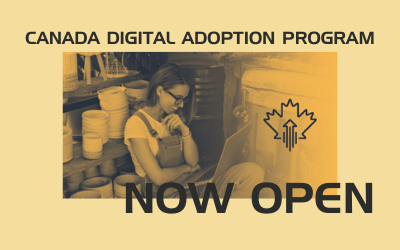
Check your eligibility: Canada Digital Adoption Program now open
Prime Minister Justin Trudeau today announced the launch of the Canada Digital Adoption Program (CDAP) to help Canadian small- and medium-sized businesses grow their online presence and upgrade or adopt digital technologies. The funding will help for-profit...
Social
Get Help.
Latest News

Check your eligibility: Canada Digital Adoption Program now open
Prime Minister Justin Trudeau today announced the launch of the Canada Digital Adoption Program (CDAP) to help Canadian small- and medium-sized businesses grow their online presence and upgrade or adopt digital technologies. The funding will help for-profit...
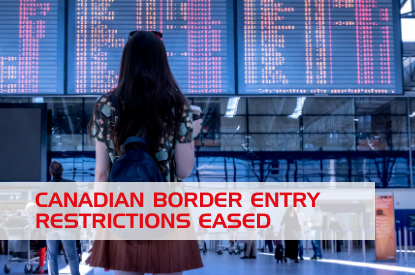
Loosened restrictions now in effect for travellers entering Canada
With declining COVID-19 cases and hospitalizations, the Canadian government announced on Feb. 15 that it would be lifting its travel advisory against all non-essential international travel and easing some restrictions at the border. These loosened restrictions went...
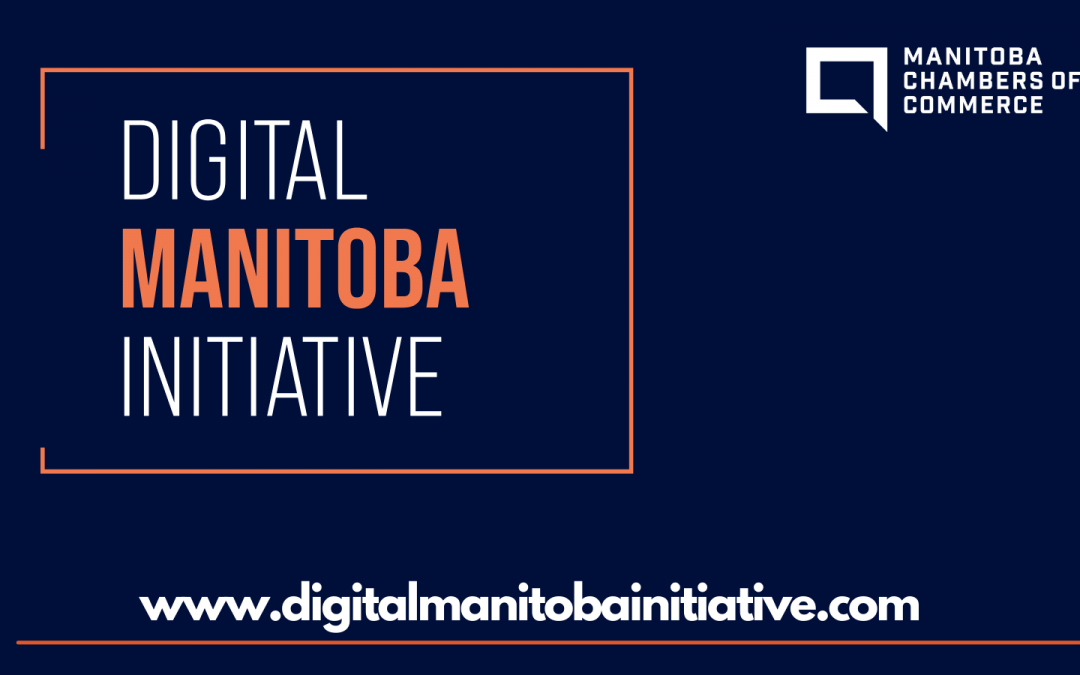
DMI set to re-open with TechUp on Feb. 22/2022
The Manitoba Chambers of Commerce (MCC) in partnership with the Province of Manitoba are preparing to re-open the funding application process for the Digital Manitoba Initiative (DMI) help Manitoba SMEs and not-for-profit organizations with digital transformation. The...





